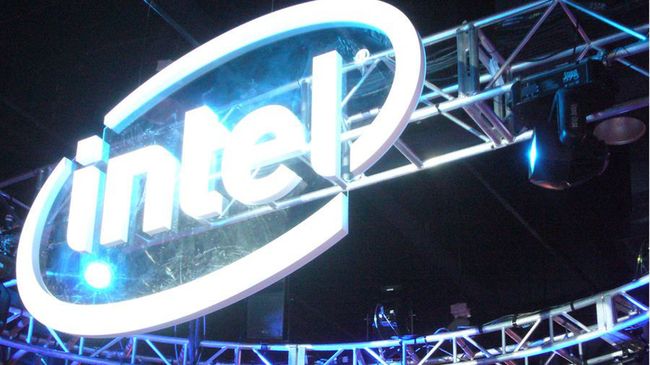https://www.techradar.com/news/intel-admits-it-wont-catch-up-with-amds-7nm-ch... 
I predict stuff based on a lot of information from a lot of places --- and I am generally pretty conservative, actually.
Here are some confirmations of my predictions of late about Intel 10nm and it really being the first failed 10nm combined with the first failed 7nm process lines (Intel would never admit to these things, of course).
Swan admits that the 2.7x scaling for 10nm was both too ambitious and too complicated. He also explains how Intel made an error when it “prioritized performance at a time when predictability was really important”.
However, as Swan notes, “The short story is we learned from it, we'll get our 10nm node out this year. Our 7nm node will be out in two years and it will be a 2.0X scaling so back to the historical Moore's Law curve.”So it looks like we’ll finally see some sorted/partially disabled 10nm chips from Intel this year, while Intel 7nm will have to wait until 2021. That’s a long time considering both AMD and Qualcomm have 7nm chips out in full volume right now.
But will Intel be happy with ceding all the performance advantages and "extra memory on top" that 7nm-5nm brings to its two biggest competitors for that long?
Does Intel really have any choice but to jest suffer through this?Well, words count I guess. Bob Swan has admitted publicly now that Intel 10nm will never meet its original goals. He also admits that Intel 7nm will not fully meet the original Intel 10nm goals either.
Does it smell like Intel's newest planned stuff is actually a continuation of the old 7nm process path but running looser specs and lower process yield goals that came originally from the "cut back" 10nm stuff?
Does this mean that in 3 years from now (when 14 layer 5nm is shipping in volume from TSMC to AMD and then to you) that Intel will just then be "getting around" to shipping their cut back version of 7nm?
Yep. It sure does. Now add a partial year for the inevitable Intel delay over something or other and you got another ~3 years worth~ of slow Intel dog years staring you in the face while you listen to the spew of Intel "product announcements" and "improvement announcements" and solvent rag based "new product lines".
Meanwhile, AMD will improve something for real every six months during that 3 year period that you will spend waiting for Intel to arrive, some will be small AMD tuning improvements and at least one very large improvement will be an across the line lithography shift that will be a really really really big one .....
 AMD 14 layer 5nm is coming inside the next 2 years
AMD 14 layer 5nm is coming inside the next 2 yearsI also now predict that 14 layer 5nm will birth some ARM based laptop/Chromebook chipsets earlier than that, with these coming from the phone boys as
they are planning on going to 14 layer 5nm for phone uses in 2020, which is a year earlier than AMD currently is thought to be planning on doing it for AMD'd chiplets (just to better thump on Intel, that is).
Please remember, Lisa Su is not slow on meeting all of her competition's moves, and Lisa Su will tend to try to meet/beat the phone boys ARM based chipset efforts no matter that Intel is still stuck in its slowly hardening tar pit and Intel isn't moving anywhere at all.
Over time, Intel will wind up meaning less and less to the general worldwide competitive actions and general progress levels.Also realize that NVIDIA is not nearly as pokey as Intel, so AMD will need to shift to 5nm early enough to meet that threat as well.
This does fall in line with rumors that Samsung is sending occasional 5nm and 3nm trial runs of chiplets to AMD for buildup and testing as part of the technical consortium efforts, leading to a new round of Samsung production tune ups and
perhaps eventually leading to some possible Samsung early production runs for a new premium line of AMD CPUs. Remember, Samsung wishes to become a major TSMC contract foundry competitor again, this has been stated by the CEO of Samsung several times over the last year ....... also remember that Samsung does not hold that there is a whole lot of difference between 5nm and 3nm as it all runs on the same equipment.
If Samsung or TSMC can work out a FinFet design at 3nm then that is all to the good as that simply means 3nm just gets here in full volume quicker ....... otherwise, Samsung's more complex gate all around nano-tube design has already been sampled both at 5nm and at 3nm sizes and we already know it works.
For the first part of next year TSMC will focus all of their attention on Apple and its needs, leaving a free time segment for some Samsung/AMD research activity to create some positive changes inside that Apple delay period. And please remember, the Samsung/AMD-Global/IBM consortium really does need a working partner to build up completed finished chipsets off their trial run stuff so they can see if their improvements really work out in the real world and have any real competitive merit or not.
As Global Foundry slowly loses all of their production relevance, Samsung wants to gain that relevance and take some real market share away from TSMC to boot.

